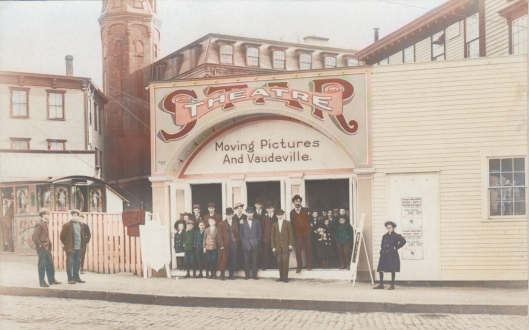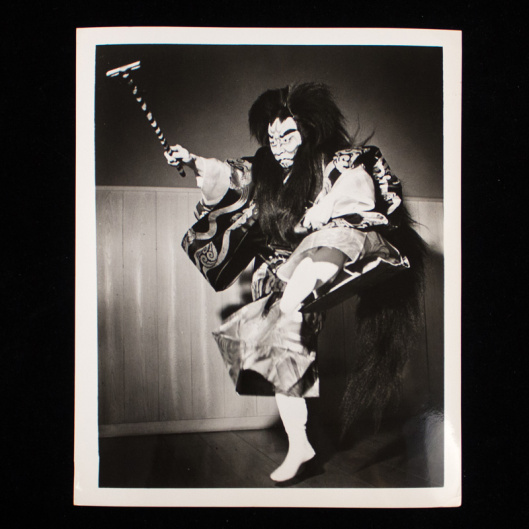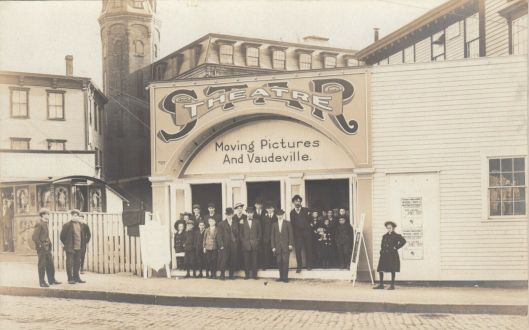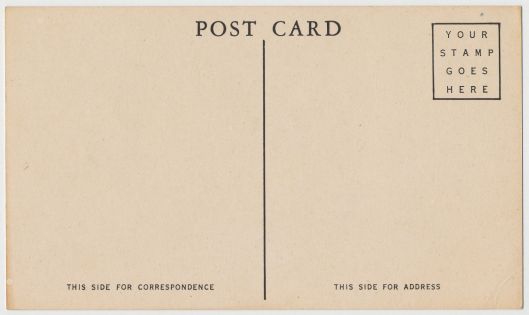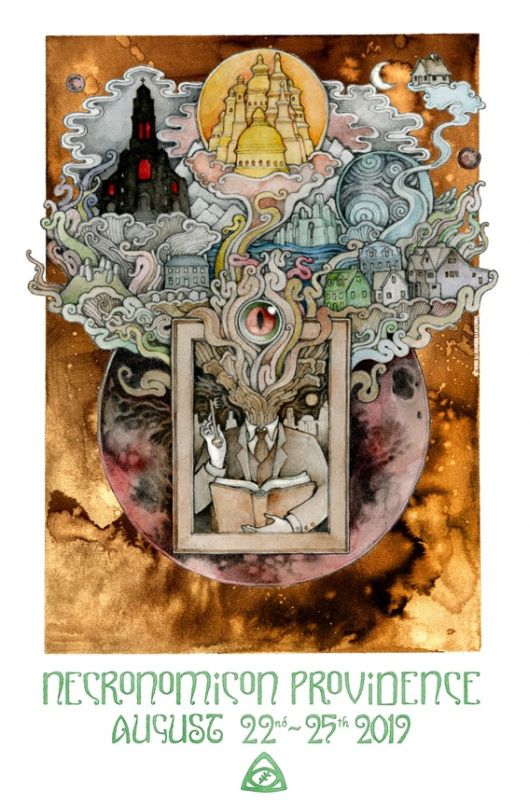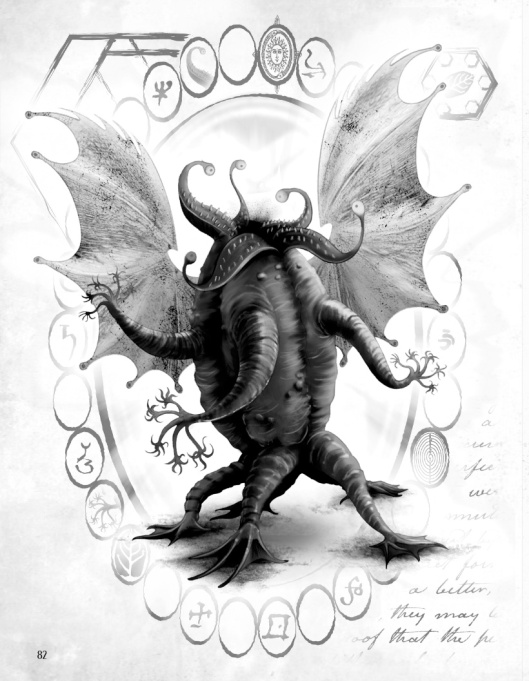Horace Smith had kindly posted the following as a comment on this blog. But I think I’d rather present it as a Guest post, which does his work justice. So, here is his investigation…
John Edwards of the Ladd Observatory at Brown — Cockney or Cornishman?
By Horace Smith.
I’ve been researching H.P. Lovecraft’s early astronomical interests. Tentaclii had at one point briefly puzzled over Lovecraft’s calling the Ladd Observatory assistant, John Edwards, a Cockney in one letter and a Cornishman in another. If what I have found is right, he was neither by birth.
 Picture: the Ladd Observatory as it appeared in the mid to late 1930s. Newly shadow-lifted and colourised.
Picture: the Ladd Observatory as it appeared in the mid to late 1930s. Newly shadow-lifted and colourised.
Of the three staff members of the Ladd Observatory, whom Lovecraft “pestered half-to-death” in his youth, the observatory assistant John Edwards provided the greatest practical aid to Lovecraft’s astronomical endeavours. Whether it was offering a diagonal eyepiece for his telescope, lantern slides for a lecture, or a lens for a camera, Edwards was there to help. But, aside from being an assistant at the Ladd Observatory, who was John Edwards? In different letters, Lovecraft alternatively referred to him as a cockney, a term traditionally applied to someone from East London, and a Cornishman from Cornwall. Could I pin down which, if either, was correct?
Tracing genealogical connections can be tricky, and not everything you read online can be trusted. I knew when I began only that Edwards had worked at the Ladd Observatory in the late 1890s and early 1900s, but I didn’t know his middle name, nor when he was born, nor where, except that England was a good bet for his birthplace. I turned to Ancestry.com and FamilySearch.org to progress further.
The federal census for 1910 gave me a middle initial, W, and a spouse, Mary A. It also provided a birth date of around 1858 and an immigration date of 1887. In 1915, Edwards accepted his former colleague Frederick Slocum’s offer of a position at Wesleyan University’s new Van Vleck Observatory in Middletown, Connecticut. When Edwards took up that position, the Wesleyan University Bulletin printed his full name: John William Edwards. Alas, his stay at Wesleyan was not long, for he died of heart disease three years later, on 24th April 1918.
 Picture: Wesleyan University Bulletin for May 1918.
Picture: Wesleyan University Bulletin for May 1918.
The Hartford Courant newspaper for 28th April 1918, informed me that, after Edwards’s death, his body was taken to Attleboro, Massachusetts, for burial. Why Attleboro?
‘Find a Grave’ led me to a photograph of the tombstone of John and Mary in Attleboro. It carried their birth and death years (1858-1918 for John and 1856-1917 for Mary) and those of two of their children, Joseph (1882-1901) and May (1891-1891). The 1910 census had already told me that, by 1910, two of their three children had died, and the gravestone and census were thus consistent. The son still living in 1910 was Alban Edwards, born in Lonsdale, Rhode Island, in 1888. His First World War draft card showed that it was he who resided in Attleboro. Massachusetts death records confirmed that Mary Ann Edwards had died in North Attleboro in 1917, the year before her husband’s passing. Now the burial of John and his wife in Attleboro made sense. The gravestone also gave me Robinson as Mary’s maiden name.
With that information, could I trace the family back to England? I checked immigration records, finding one likely match: the arrival from Liverpool of a John Edwards with Mary A. Edwards and Joseph Edwards, all of the right ages, at the port of Boston aboard the Catalonia on the 1st of October 1887. They were lower steerage passengers, and John was labelled a labourer. I next came up with a marriage record for a John Edwards and a Mary Ann Robinson on 12th April 1879, at Christ Church in Preston, Lancashire, with the birth years of 1858 for John and 1857 for Mary. That seemed quite close and, if correct, gave me Peter Edwards as John’s father and an association with Lancashire. Was there additional evidence for a Lancashire connection? A John William Edwards was christened on 4th April 1858, at Saint John Church in Preston, Lancashire. John William Edwards was also listed as having been born in Preston sometime in the first quarter of 1858. If not a certainty, there is at least some likelihood that he was the future assistant at the Ladd Observatory.
Everything was hanging together, so far. But John Edwards is a common name. Could I find any evidence that contradicted the above? I did find one document that didn’t fit. The 1900 U.S. Census showed a John Edwards who was an astronomer’s assistant, who lived on Doyle Avenue, near the Ladd Observatory, who was the right age, and who arrived in the United States 12 years earlier in 1888 — not far off the late 1887 date found above. The census’s March, 1858, birth date is consistent with an early April christening. However, the 1900 census stated that John was single! Where were Mary and Alban? Was that just a mistake? Or did it indicate some sort of otherwise hidden family problem?
I checked the 1900 census for a Mary A. Edwards. Mary Edwards is a common name, but I couldn’t find a Mary Edwards that seemed to fit the bill in terms of age, birthplace, spouse, etc. Nor was there any mention of an Alban Edwards. To try to straighten things out, I turned to the Providence city directories. The 1901 and 1903 directories showed John living at two different Doyle Avenue addresses. They also showed that a Mrs. Mary A Edwards worked as a nurse and lived at 67 Manton Avenue in Providence, but later directories show that she was not the Mary Edwards for whom I was looking. Many women who were not heads of a household or employees do not appear to be listed within the directories, so the absence of Mary is not necessarily telling. For example, John W. Edward’s address in the 1910 city directory is consistent with his 1910 census address, However, the 1910 directory makes no mention of Mary, while the 1910 census indicates she was living with John at that address.
Fortunately, Rhode Island carried out state censuses in between the federal ones. I discovered a 1905 Rhode Island state census for a John W. Edwards, living on Doyle Avenue, of the right age — his birth date is given as 4th March 1858 — and working at the Ladd Observatory, with a mother and father born in England. Those last items are incorrectly indexed on the transcribed version of the census, but are clear in the original. However, in that census, Edwards is listed as married not single, with four in the household. There is also a census entry for Mary A. Edwards at the same address — her birth date is indexed as 18th April, 1856, but the original pencilled entry is hard to read. Mary was then a mother of three, only one of whom was still living, and with a household again containing four people.
My conclusion is that the weight of the evidence indicates that it is the 1900 census entry which is in error. Perhaps the circumstance of their son Joseph having died the following year somehow temporarily disrupted living arrangements? Or perhaps “the census-taker’s knock” awakened John after a night of observing and he just wanted to get back to bed as quickly as possible! If all this is indeed correct, we conclude that John Edwards was English, but neither a cockney nor a Cornishman.


